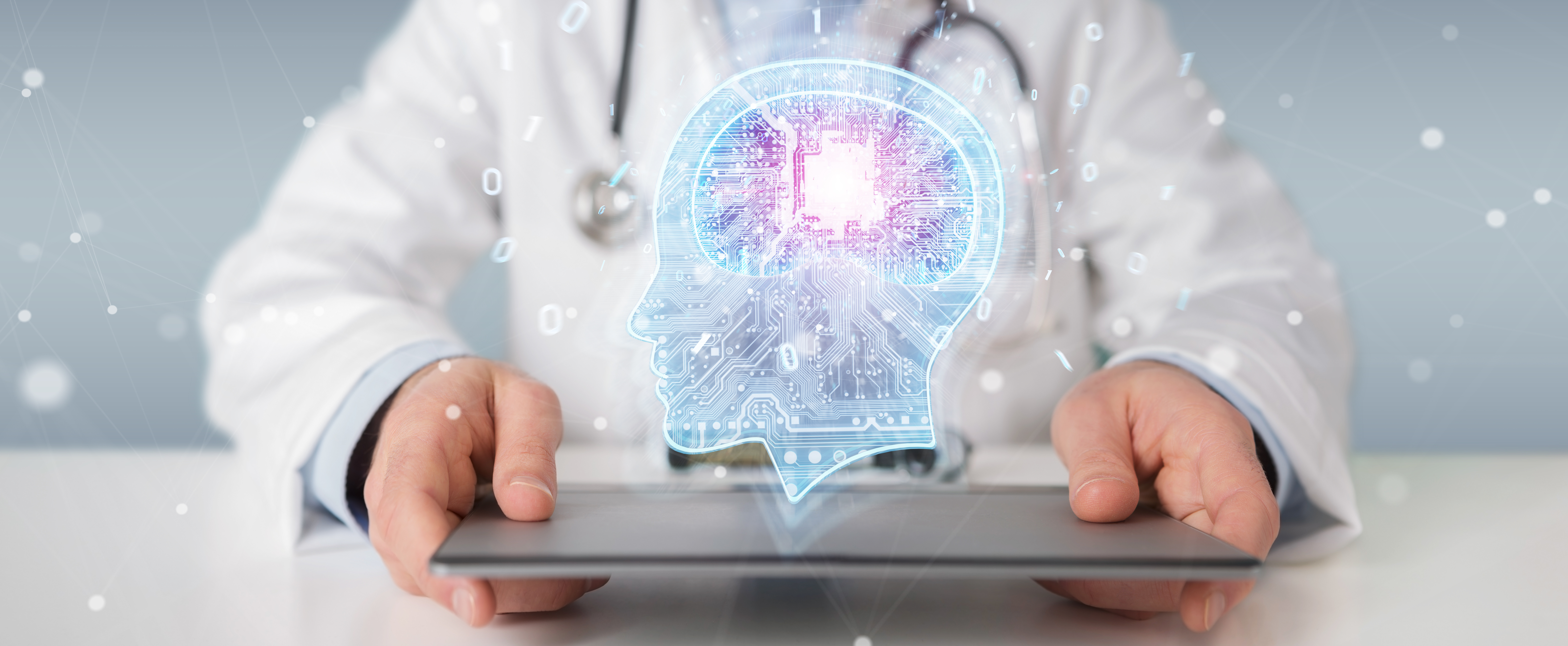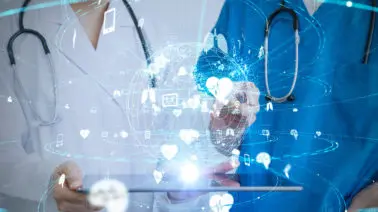
Artificial Intelligence (AI) has big implications for healthcare. This has been brought to light by the current global COVID-19 pandemic that has overloaded hospitals, stretched resources, and infected millions of people before tests and treatment could be made available.
AI-driven technology has been in development for the healthcare community for many years. For example, AI can be used to enhance 2D and 3D imaging to better detect abnormalities and improve diagnosis. However, there are still some challenges with how AI can be applied to healthcare.
Data models can be biased, especially when limited data. Last year, Health IT Analytics published a critique on a particular AI model used to determine healthcare needs that had a racial bias.
The model was trained only on data about spending on healthcare, not about healthcare that was requested or given. Because the payment data showed that black patients spent less money on healthcare in this example, the algorithm assumed they had less of a need for healthcare services.
Once the bias was removed from the AI model, the results showed a 28.8% greater need for more healthcare services to this group. At this point in time, there are no standardized frameworks to analyze models for bias. The only reason this example was found was because the data was noticeably skewed.
Even with these challenges facing AI technology in healthcare, experts predict that AI will continue to bring positive changes to the medical field in the coming years. Some employers are even offering enterprise training solutions to attract new healthcare AI tech talent.
Recently, Udacity hosted a virtual conference about the future of AI in healthcare where top experts in technology and medicine came together to discuss their predictions —from predicting future pandemics to diagnosing disease. Here’s what they presage is on the cutting edge of AI in healthcare.
AI to Augment Doctors
Due to the shortage of physicians, doctors are constantly overloaded, which can lead to error and burnout. That’s where AI comes in. AI can be used to automate repetitive tasks as well as process extraordinarily large amounts of data. With machines focusing on these parts of the work, doctors can focus on the patients that actually need higher levels of care.
Andjela Azabagic — the Director of Product at AI Solutions iCAD, Inc — used breast cancer screenings as an example of AI augmenting doctors. Mammograms used to be 2D images.
Imagining professionals would analyze roughly 400 images a day. Unfortunately, 2D imaging can miss critical data and some cancer cases were misdiagnosed. When 3D imaging became the norm, the accuracy of diagnosing increased. However, this kind of testing created significantly more images to analyze.
Doctors went from observing 400 images per day to over 28,000. This quickly led to burnout, errors, and more misdiagnoses because doctors simply could not keep up with processing this amount of data.
Soon, tools were developed using AI to analyze breast cancer screenings. Around 90% of the time, the images are considered “normal” and need no doctor intervention. About 10% of the time, the screenings are “abnormal” and need further testing. AI helps doctors focus on that 10% of abnormal cases and get the patients the help that they need.
“AI will not replace physicians,” said Andjela. “Only those physicians who do not embrace AI will be replaced.”
AI to Improve Diagnosing Diseases
Using AI to diagnose diseases may sound like technology is taking over the role of a doctor, but in reality, AI would just make disease diagnosis more accurate. Doctors can only synthesize so much data at a time. Similar to the story of breast cancer screenings above, trying to understand too many data points at one time leads doctors to error, burnout, and misdiagnosis.
Computers and AI models are able to analyze large datasets about patients, using the various kinds of information to make skillful predictions. Data that are analyzed can range from family history, wearable health tech data, previous medical records, geographic location, and so much more.
Matthew Versaggi — Senior Director of AI in Cognitive Tech at Optimal Tech — specifically spoke to the advantages of using graph-based databases for analysis: “Graph databases can pull [many sources of] information in and give us really significant real-time insights because of the way they capture relationship[s].”
In other words, graph-based databases put an emphasis not just on the data itself, but also on the relationships between the data, which can bring about previously unrecognized insights. Tracking all the different types of patient data in a graph database brings out insights that doctors might not see when looking at the patient’s data laid out in a regular medical chart.
AI Used to Predict and Prevent Pandemics
Healthcare systems around the world have felt the resource constraints from an influx of patients coming in with COVID-19. From creating makeshift hospitals to using factories for emergency production of ventilators, it’s clear that many healthcare systems were underprepared. Fortunately, AI can be used to make sure that doesn’t happen again in the future.
Humayun Irshad — Lead AI Researcher at Synthesis AI — sees a wide range of possibilities for AI technology to help doctors during a pandemic.
He believes that AI can be used to plan out the allocation of scarce resources, like personal protective equipment (PPE) and ventilators, and distribute doctors to where they are most needed, such as areas with a lot of high-risk individuals. Additionally, he thinks that technology should be used to keep people safe.
Telemedicine — both remote doctor visits via webcam and AI technology like chatbots — can be used to diagnose and care for sick patients from their own homes, reducing the risk of them spreading illness at hospitals or in public.
The future of AI in relation to pandemics will be in predicting future diseases, origins, spread, and hotspots. Already, simulations have been used — based on previous pandemic models and current data — to predict hotspots and spread. The more data that is gathered, and the more that the models are able to advance, the better medical professionals can be at predicting future outbreaks.
AI, Healthcare, and You
The future of healthcare is tightly coupled with AI. These advancements will bring benefits to the whole system, including less stressed doctors, more accurate diagnoses, and better allocation of resources.
If the intersection of AI and healthcare interests you and you want to learn more, check out the recordings from Udacity’s AI in Healthcare virtual conference.
If you wish to get started on a career path in AI, you can also check out Udacity’s AI Nanodegree program, which only takes 3 months to complete! What are you waiting for?

